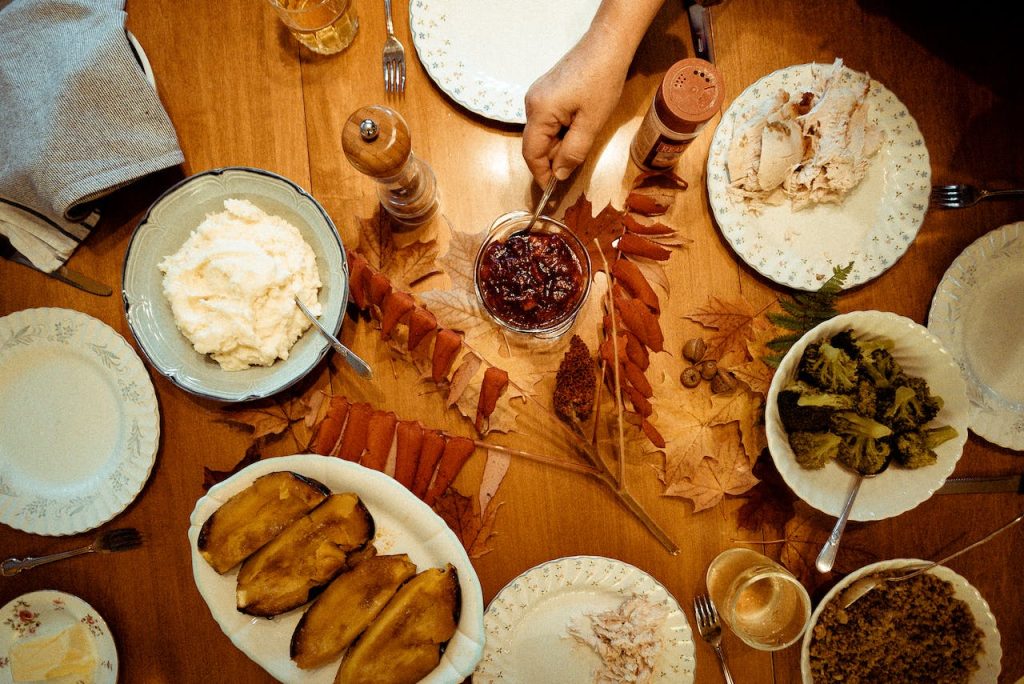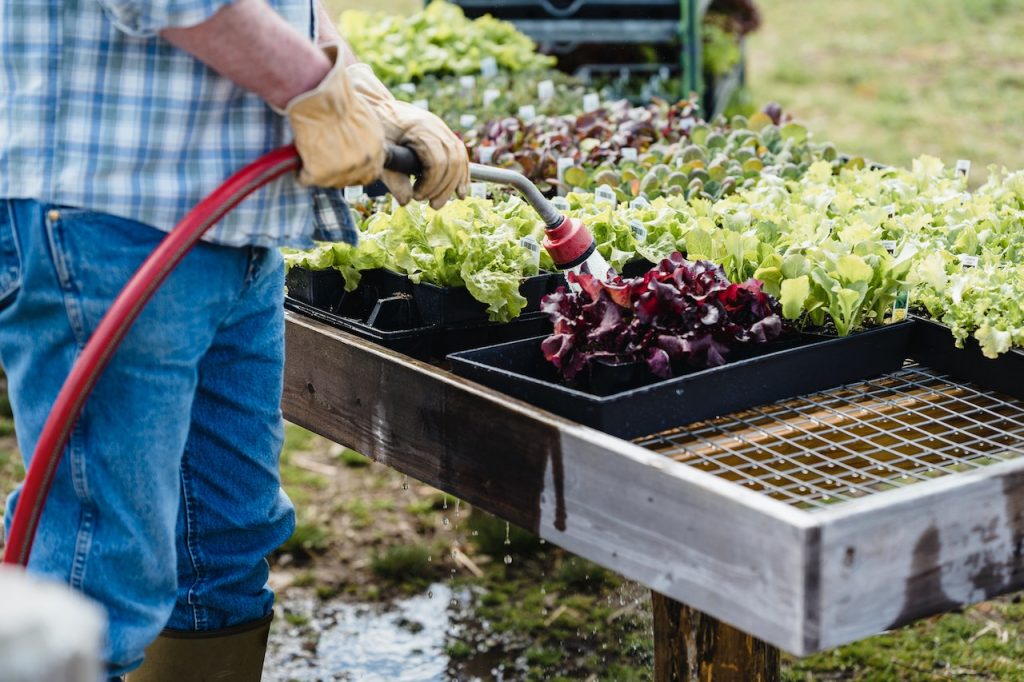With the fall comes the beginning of the big holiday season. And next up just happens to be Thanksgiving. While this holiday may not get as expensive as the following holidays, it can still get pretty pricey. This is especially true if you happen to be the host and aren’t having a potluck style Thanksgiving. Luckily, we’ve found 5 delicious budget friendly Thanksgiving foods that have helped keep our wallets and our bellies filled.
#1 CRANBERRIES
Cranberries tend to be fairly traditional in American Thanksgiving spreads. These little red berries are not only a pretty healthy addition to your Thanksgiving meal, but are very cost-effective also. Even if you choose to purchase them in a can, they’re pretty budget friendly.
Typically, a can of jellied or whole cranberries can cost anywhere from $.95 to $1.60, depending upon the brand, location, and store. These prices are for a 14oz can, and they certainly have a lot of added sugar. Due to that and the added cost, this isn’t our preference. But they will do the trick if you don’t feel like making your own cranberries from scratch.
If you can manage making your own cranberry sauce, it’s certainly the healthier and more cost effective way to do it. I just found a 12oz bag of organic cranberries for $1.98. This bag of cranberries will make us a heck of a lot more than one 14oz can and save us more money too.
#2 GREEN BEANS
Green beans are a phenomenal vegetable to add to your Thanksgiving food selection. They are not only really budget friendly but extremely nutritious also. Green beans contain decent amounts of Fiber, Vitamins A, C & K, Beta-carotene, Folate and Potassium, so they are a nutrient power house. Adding both these and cranberries into your Thanksgiving spread can help boost your immunity for the winter, which is a bonus for all of us!
Recently, I’ve found a 12oz package of fresh green beans for around $2.79, or a 14.5oz can for around $.98. While the can may seem cheaper, a lot of that is water weight. Plus, the can contain around 3 servings and the fresh serves around 4-6.
One of our favorite ways to make green beans for the holidays is by sautéing them with some olive oil and spices. This is quick, easy and really flavorful and only costs us approximately $3.07 for the whole batch. Plus it serves all 7 of us nicely.
#3 POTATOES
Potatoes are something that pretty much everybody loves. They’re easy to make in so many different ways for added diversity. And they can be extremely healthy as a added bonus, depending upon what you put in/on them. Which is just more proof that healthy food doesn’t really have to cost more money.
The easiest and most budget-friendly way to make them is either mashed or roasted. With this specifically in mind, I prefer to use either Yukon Gold or Red potatoes. Finding a 5lb bag of Yukon Gold potatoes for under $5 seems pretty easy to run across. For mashed potatoes you just need to add butter, milk and any spices of your choice. If you are roasting the potatoes, olive oil and spices are the only additions needed.
Depending upon what ingredients you use and how much of each, the cost will vary. But for us, we can turn a 5lb bag of potatoes into delicious mashed potatoes for a little over $.50 per person. And at that price, I am definitely going to have seconds!
#4 TOFFEE
While I love the main Thanksgiving course, I certainly can’t forget about dessert. And for many years now toffee has been one of my favorite things to make. It’s not only horribly addicting because it’s so delicious, but it’s also really east to make and cost effective to boot.
Here is my simple and easy toffee recipe (which can be made vegan if you substitute vegan butter for the regular version):
- Unsalted Butter (1lb) – $2.99
- Sugar (16oz) – $2.49 for a 4lb bag (9.5cups) = $.52
- Water – FREE! (usually)
- Pink Himalayan Sea Salt (1tsp) – $1.99 for a 3.3oz (16.43tsp) jar = $.12
- Semi-Sweet Chocolate Chips (12oz)– $2.12
TOTAL: $5.75
Put everything except the chocolate chips in a large pot. Stir constantly while the pot raises to a boil. Once it begins boiling, keep stirring until a candy thermometer reaches 300 degrees. This is approximately 8-12 minutes, depending upon your pot and stove. Once it reaches that point, pour the toffee into a sheet pan to cool. Add chocolate chips to the top of the toffee and spread around to form a thin layer. Let cool on the counter to room temperature and then pop it in the refrigerator for a couple of hours to get a hard crack. This stuff is so freaking delicious that we all start eating it right out of the pan!
While the total may sound like a lot, it’s really not. I get a huge sheet pan full of the stuff and it can easily serve 10-12 people.
#5 PUMPKIN PIE
Another dessert favorite about Thanksgiving tables is pumpkin pie. Just like the cranberries and the green beans, pumpkins also happen to be really good for you. They contain a good amount of Magnesium, Vitamin A, Iron and B Vitamins. So not only is pumpkin pie healthier for you than some of the other dessert options, it’s also delicious and pretty easy on your wallet. Trifecta for the win!
Typically, the crust is the most expensive part of the pumpkin pie. Therefore, if you can make your own crust, it’ll be more cost effective. But if not, there are a plethora of pie crust choices starting at $1.99 for each one.
For one of the best, and easiest pumpkin pie recipes, the breakdown is the following:
- Pure Pumpkin (15oz can) = $.95
- Light Brown Sugar (3/4cup) – $2.29 per 2lb bag (4cups) = $.43
- Eggs (3) – $.99 per dozen = $.25
- Cinnamon (1 1/2tsp) – $5.99 for 7.12oz (42.72tsp) = $.21
- Salt (1/2tsp) – $1.99 for a 3.3oz (16.43tsp) jar = $.06
- Ginger (1/2tsp) – $2.79 for a .7oz jar (4.2tsp) = $.33
- Allspice (1/2tsp) – $.78 for a .65oz jar (3.9tsp) = $.10
- Nutmeg (1/4tsp) – $2.99 for a .9oz jar (5.4tsp) = $.14
FILLING TOTAL: $2.47
TOTAL W/CRUST: $4.46
Since a regular sized pumpkin pie serves approximately 8 people, you’re looking at about $.55 per slice. That’s much more delicious than any slice of pie you’d get out at a restaurant!
budget friendly THANKSGIVING FOODS summary
Overall, there are plenty of budget friendly Thanksgiving foods that can adorn your table this year. None of these 5 foods will break the bank or your pants. So if you want to keep your wallet fat and your waistline a little smaller, think about incorporating these into your Thanksgiving meal. Heck, at these prices, you could easily make these part of a regular diet and still be saving money. What’s not to love?
What are some of your favorite budget friendly Thanksgiving foods to incorporate at your table?













